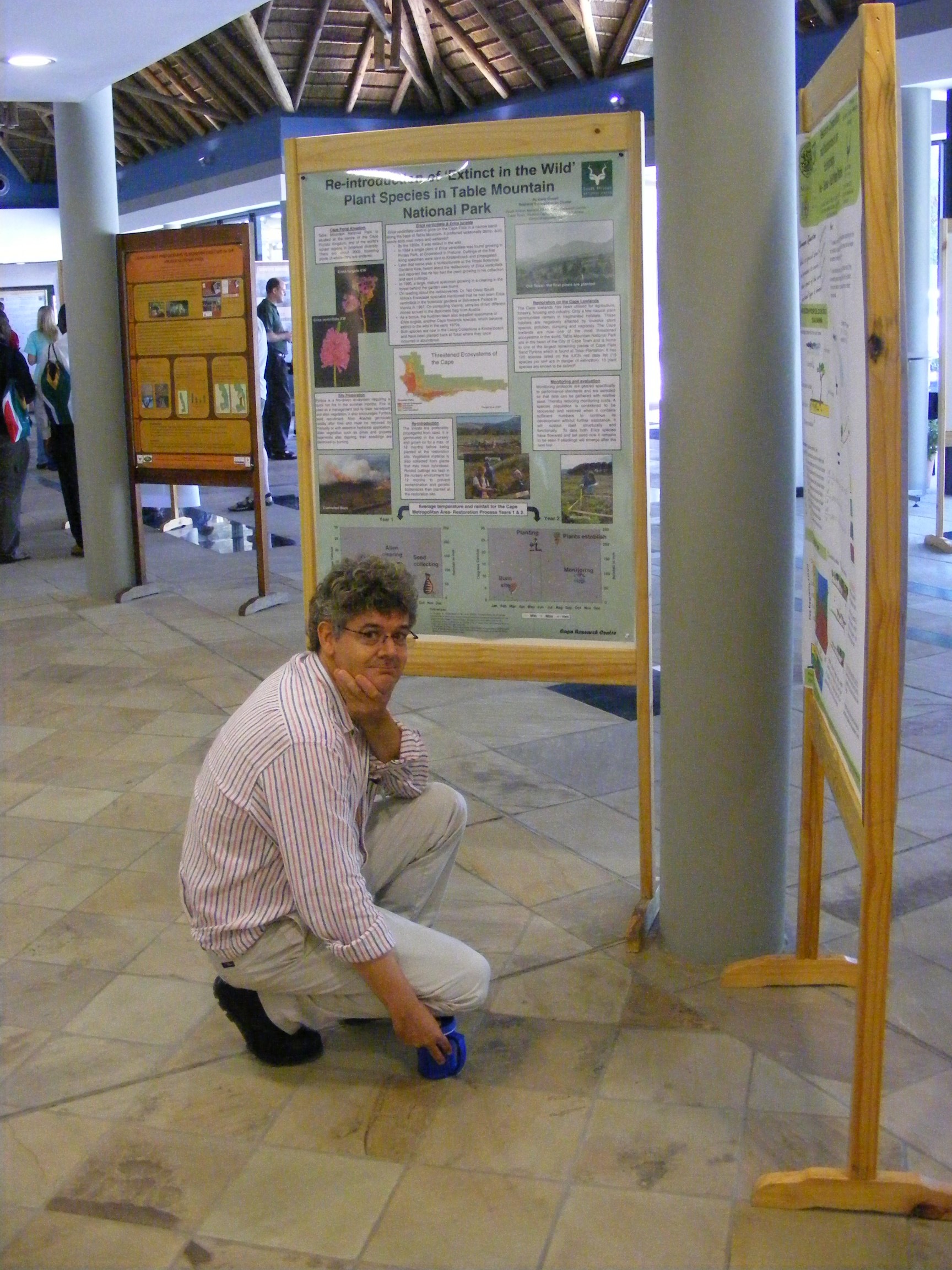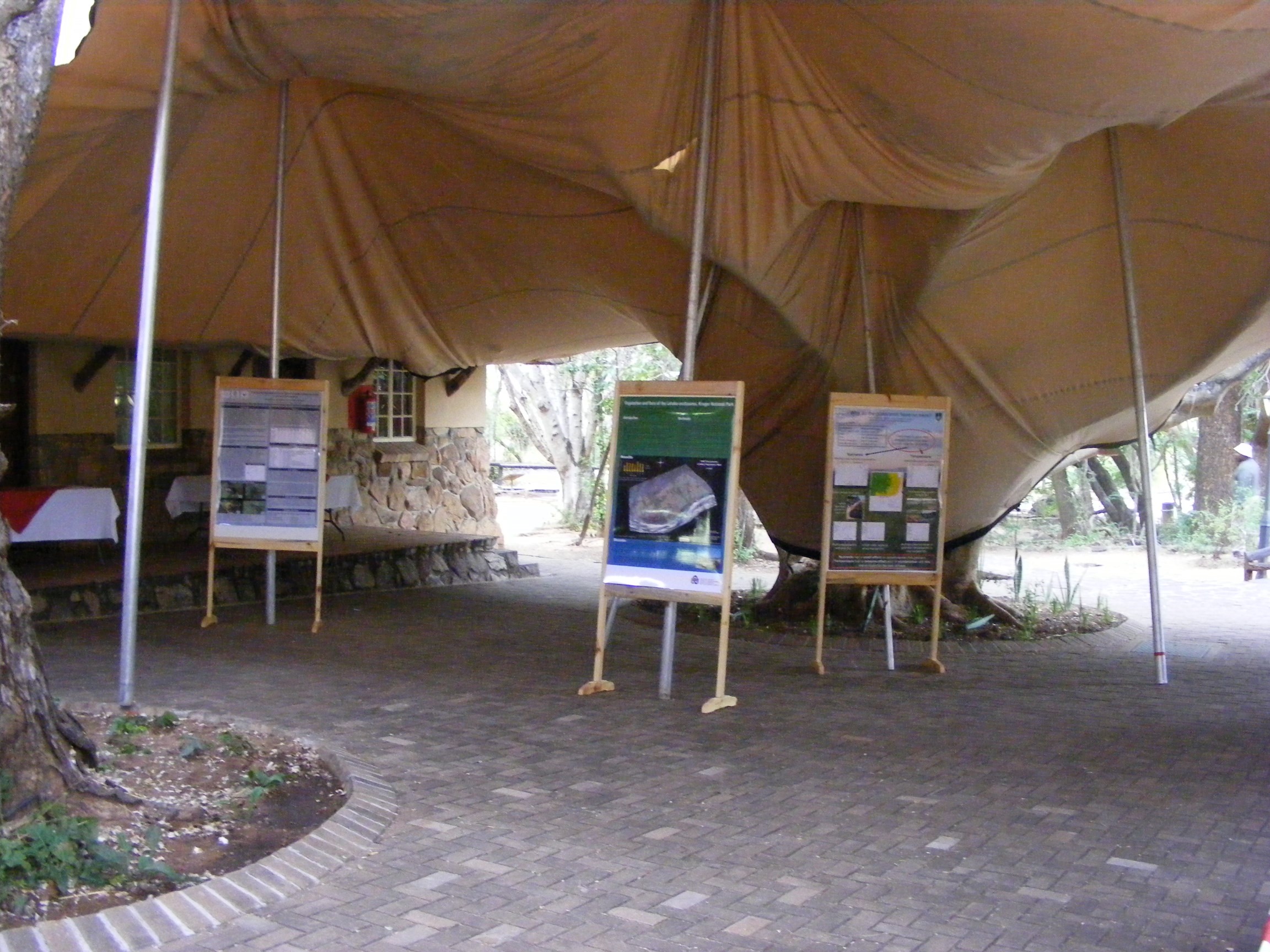| POSTER # |
POSTER TITLE |
PRESENTER
|
01. Detection, attribution & prediction of changes in species distributions
|
| 1. |
The possible role of climate change in bringing a new butterfly species, Euripus nyctelius, to Hong Kong |
Tsun Fung Au |
| 2. |
Detection simplified- delineating climate sensitive zones along the north-western Himalayan rivers |
Aashna Sharma |
| 3. |
Range expansion of Far Eastern bird species in the Amur region, Russian Far East |
László Bozó |
| 4. |
Changes in spring arrival dates of Central-European bird species over the past 100 years |
László Bozó |
| 5. |
Creating a Citizen Science Monitoring System/Network to Detect Species Range Shifts in the Bering Sea and Gulf of Alaska |
Melissa Good |
| 6. |
Systematic evaluation of marine range shifts in Australia |
Connor Gervais |
| 7. |
An integrative toolbox for the mechanistic understanding of climate-driven species redistribution, from individuals to communities |
Samantha Twiname |
| 8. |
Predicting redistribution of tree species and communities under recent climatic change: Benchmarking temporal predictions from correlative and mechanistic models |
David Uribe |
| 09. |
Going off the deep end: pitfalls of acoustic telemetry beyond scuba depths |
Stephen Scherrer |
| 10. |
Detecting poleward migration of tropical fish species along southeast temperate Australia: can we measure tropicalisation of Sydney Harbour using historical museum data and other sources? |
David Booth |
| 11. |
ShinyBiomod: A new R application for modelling species distribution |
Ian Ondo |
| 12. |
Current status of marine non-indigenous species in the Western Pacific region |
Suchana Chavanich |
| 13. |
Antarctic fish: feeding behavior and parasitic shifts in a changing climate |
Voranop Viyakarn |
| 14. |
Poster Presentation: Coarse-resolution data overestimates species range shifts in response to climate change |
Brittany Trew |
| 15. |
The effects of dispersal on projections of species distribution: a simulation approach |
Jennifer Miller |
| 02. Understanding ecological and evolutionary mechanisms facilitating or hindering range shifts |
| 16. |
Golden jackal on the move in Europe: tracking the changing land-use and climate |
Klára Pyšková |
| 17. |
Krill habitat associations and distributions in the central California Current System |
Megan Cimino |
| 18 |
Phenology Seed Germination Improvement of Two Endangered Trees Species in the High Forest Zones of Ghana |
James Amponsah |
| 19. |
Using past rates of climatic niche change to predict species current response to climate change |
Luana Bourgeaud |
| 20. |
Understanding the Variation in Habitat Requirements is Important in assessing the resilience of species to climate change |
Daniel Costa |
| 21. |
Tracking optimal temperatures: The role of thermal history and behavioural thermoregulation in the re-distribution of spiny lobsters |
Samantha Twiname |
| 22. |
The importance of monitoring local ocean acidification and the eco-physiological and behavioural responses of species in an era of global change |
Carla Edworthy |
| 23. |
Otlet – International network and infrastructure for scientists to share, source and request biological samples |
Tiffany Nay |
| 03. Impacts of climate change on community structure and patterns of taxonomic, functional and phylogenetic diversity |
| 24. |
Assessing climate change driven variations in pelagic fish species distribution and abundance in the North East Atlantic fishery of Sierra Leone |
Sheku Sei |
| 25. |
Plankton on the move |
Abigail Mcquatters-gollop |
| 26. |
Southern invasions due to climate change induces reorganization of communities in the Bay of Biscay |
Marie Le Marchand |
| 27. |
Do plankton taxa within functional lifeform groups respond similarly to temperature change? |
Jacob Bedford |
| 28. |
Impact of fish herbivory on submerged vegetation in the freshwater ecosystems |
Ivana Vejríková |
| 29. |
Root and above-ground trait variation across a water availability gradient in woody Fynbos shrubs |
Nicola Kühn |
| 30. |
Global patterns of seahorses and pipefishes richness |
Rui Rosa |
| 04. The paleo-ecological perspective: reconstructing species distributions over multiple millennia |
| 31. |
Establishing the mechanisms of range contraction for muskox |
Elisabetta Canteri |
| 32. |
Species on the move. Ancient Egyptian perspective |
Kamila Braulinska |
| 05. Conservation paradigms & management strategies for a shifting future |
| 33. |
Global Rewilding Potential |
Scott Jarvie |
| 34. |
The Great Eastern Ranges Initiative: Scaling-up to meet Australia’s connectivity conservation challenge |
Gary Howling |
| 35. |
Trees Do Not Make A Forest: Large-Scale Species Distribution Modeling Of A Saproxylic Specialist Cucujus Cinnaberinus |
Michal Belcik |
| 36. |
Towards a global database of alien plants in protected areas: effects of regional naturalized species richness |
Desika Moodley |
| 37. |
How regional fishery bodies have responded to climate change |
Gretta Pecl |
| 38. |
Protection of Species In Critical Conditions: Tracking Ecosystems at the Atewa Range Forest Reserve in Ghana |
Edward Amankwah |
| 06. Governance, legal and ethical issues for shifting species and changing ecosystems |
| 39. |
Planning for a changing ocean: implications of moving marine ecosystem services for ocean planning and policy |
Catarina Frazão-Santos |
| 07. Cultural, social and economic dimensions of changes in species distributions |
| 40. |
Farming spineless Opuntia ficus-indica: alleviating the impact of climate change in arid areas or promoting invasion by an alien plant |
Ana Novoa |
| 41. |
Citizen science and communication about species redistribution in Australia: what audience is the Redmap Australia project connecting with? |
Gretta Pecl |
| 08. Indigenous knowledge and species on the move |
| 42. |
The Traditional medicine knowledge and medicinal plant species move in response to Climate Change Adaptation in Tibetan village of Eastern Himalayas, China |
Lun Yin |
| 09. Implications of species on the move for human and animal health |
| 43. |
High resolution Maxent models of global snake distributions for effective snake bite management |
Anna Pintor |
| 44. |
Exploring global patterns of zoonotic dark diversity |
Sonia Tiedt |
| 12. Ecological impacts of species redistributions on recipient ecosystem function and resilience |
| 45. |
Tropicalisation of temperate reefs: implications for nursery habitat function for juvenile fishes |
Erin Mccosker |
| 46. |
Dine-in or delivery: are locally produced or imported food sources more important to coastal reef fish biomass over large scales? |
Amy Rose Coghlan |
| 13. Interactions between multiple stressors and range shifts |
| 47. |
From Individuals to Processes: Scaling up Climate-Dependent Larval Growth Rates and Behaviors to Population Distributions of Oysters in a Changing Ocean |
Jake Lawler |
| 48. |
Exploring environmental scenarios using a model of intermediate complexity for ecosystems for South African anchovy and sardine |
Kelly Ortega-cisneros |
| 14. Protected Areas Planning for Species on the Move: Lessons from the tropics and marine opportunities |
| 49. |
SANParks Climate Change Adaptation Strategic Framework and Implementation Plan |
Mmoto Masubelele |
| 50. |
Do biodiversity hotspots adequately represent threatened species? A case study from Australia |
Anna Pintor |
| 51. |
Preparing South African National Parks for climate change |
Wendy Foden |



